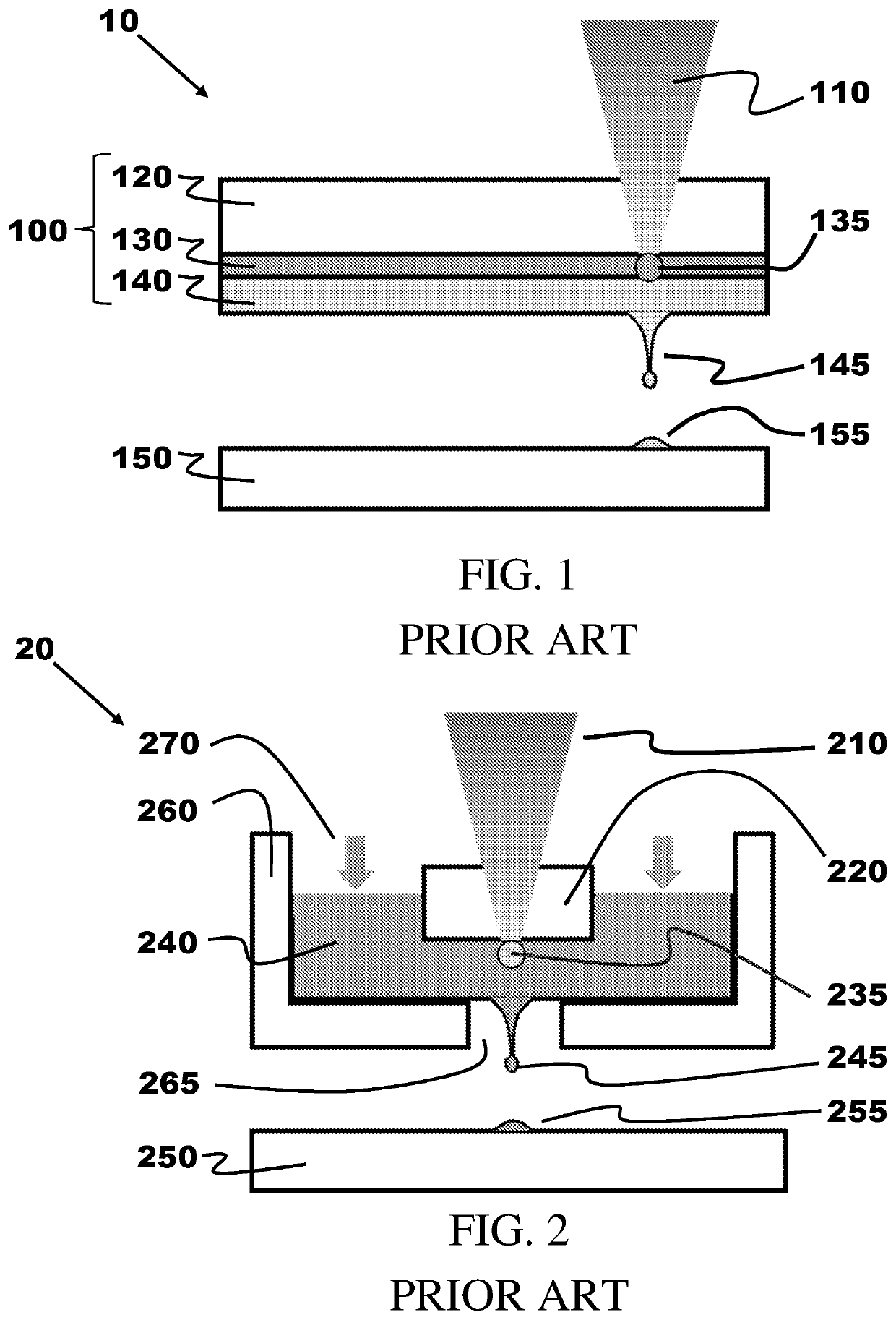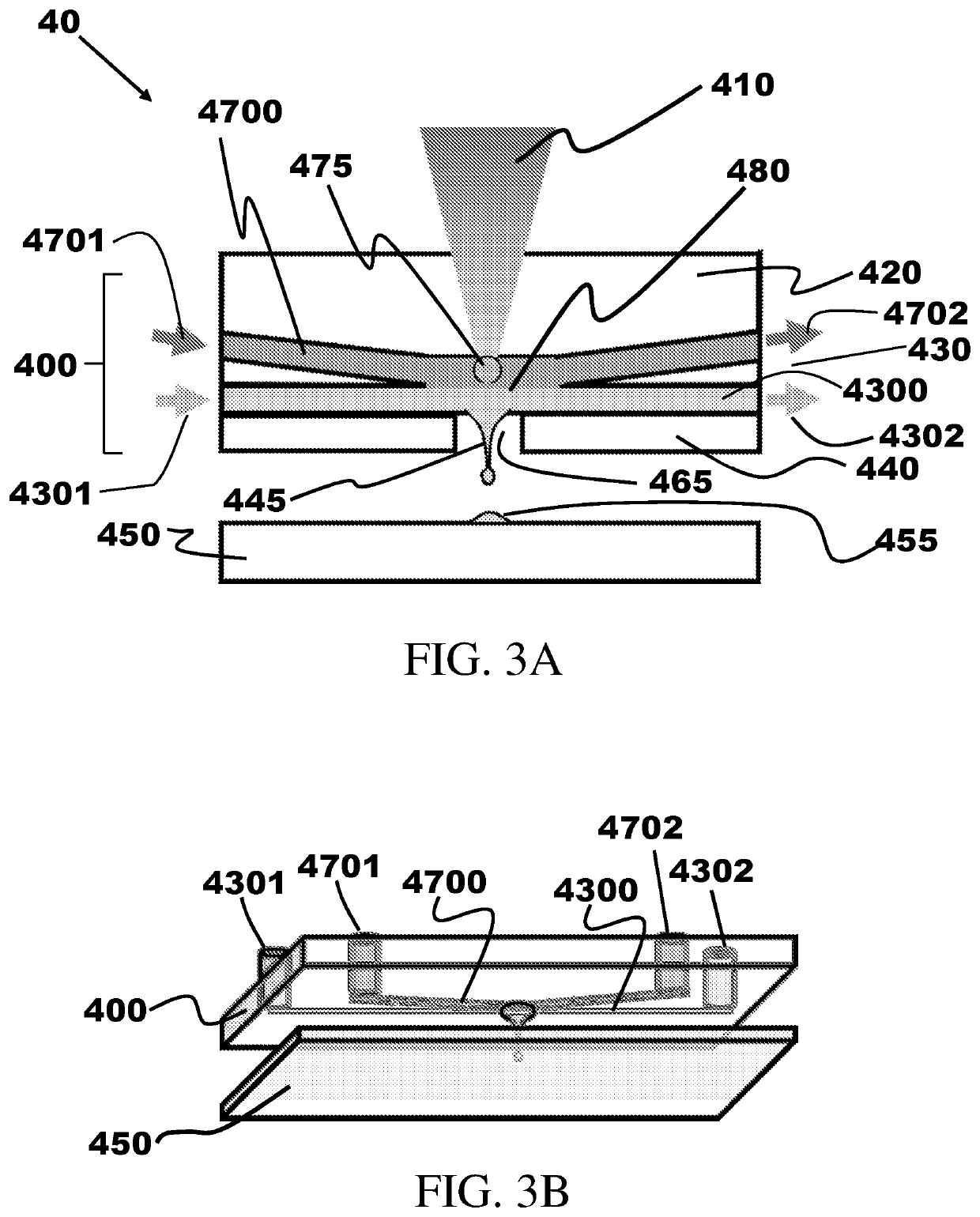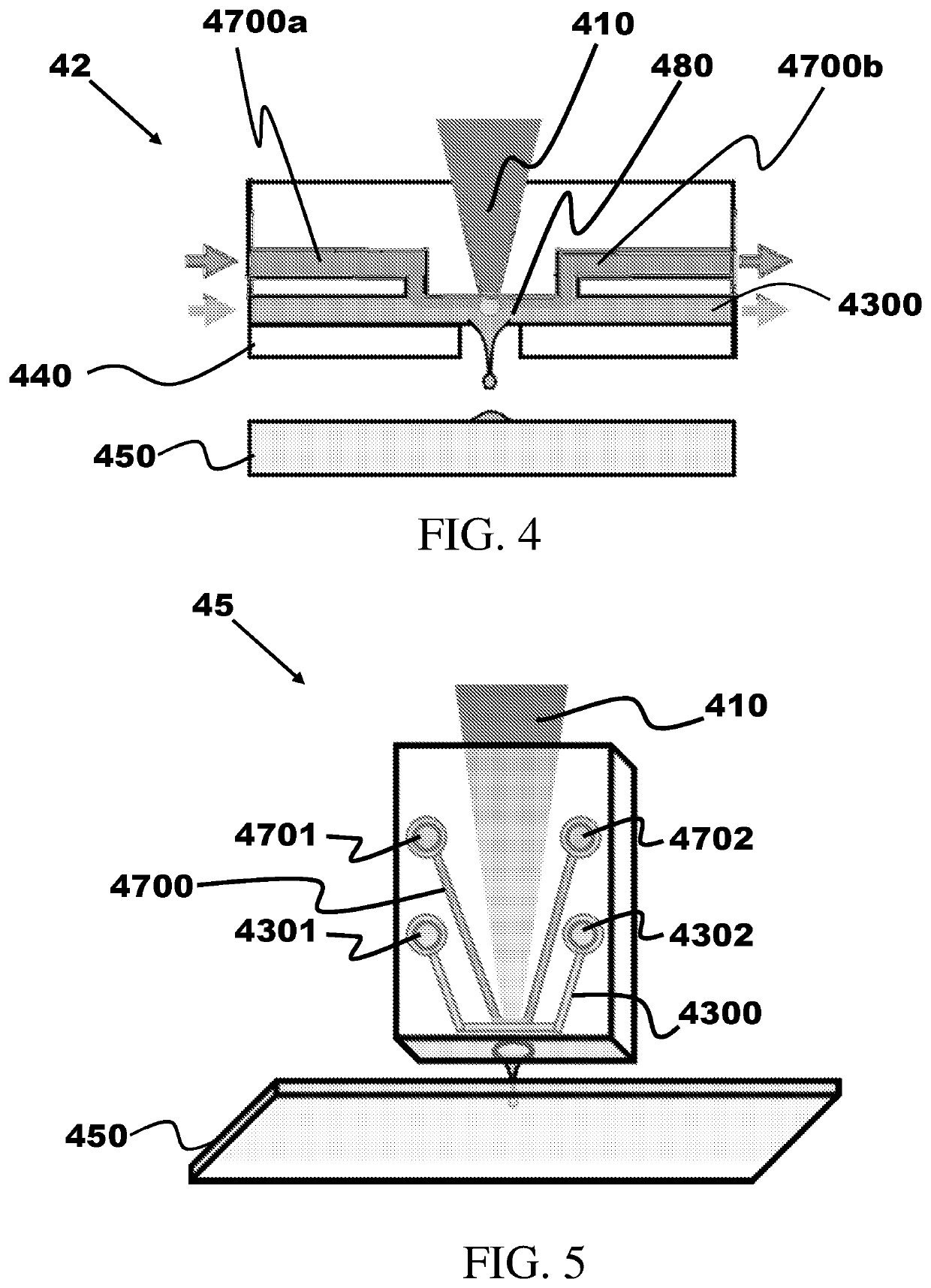System and Method for Laser Induced Forward Transfer Comprising a Microfluidic Chip Print Head with a Renewable Intermediate Layer
a microfluidic chip and print head technology, applied in the field of laser induced forward transfer (lift), can solve the problems of inability to include an intermediate layer in the renewable lift system, limited efficiency of the current known lift method in some uses, and inability to reduce the flow rate of the reynolds. the effect of reducing the flow rate and suppressing the turbulence within the flow
- Summary
- Abstract
- Description
- Claims
- Application Information
AI Technical Summary
Benefits of technology
Problems solved by technology
Method used
Image
Examples
embodiment 40
[0114]Reference is now made to FIG. 3, which presents a schematic diagram of a typical non-limiting embodiment 40 of a LIFT system that includes a microfluidic chip LIFT head of the present invention. A cross-sectional view is shown in FIG. 3A, while FIG. 3B shows a view from beneath the LIFT head that illustrates the inlet and outlet connections of the fluid flow channels of the MFC LIFT head. The system comprises an MFC 400, which serves as the LIFT head, and a receiving substrate 450 onto which ink is deposited from the LIFT head. The MFC comprises three regions: (1) a relatively thick upper region 420; (2) a relatively thin middle region 430 comprising at least two channels that pass through the body of the MFC: an intermediate layer channel 4700 and an ink channel 4300, which is disposed further from the upper region than is intermediate layer channel 4700; and (3) a relatively thin lower region 440 that includes an orifice 465 facing the receiving substrate.
[0115]A fluid conne...
embodiment 42
[0117]Reference is now made to FIG. 4, which presents a schematic illustration of a second non-limiting embodiment 42 of the system of the present invention. In the embodiment shown in the figure, the intermediate layer channel is divided into two portions, 4700a and 4700b, the interior end of each of which connects to the ink channel within the MFC. In this embodiment, fluid connection 480 is provided by the two connections between the intermediate layer and ink channels.
[0118]The MFC can be made of any appropriate material. The following non-limiting examples of materials of construction are given to assist the person of ordinary skill in the art how to make and use the invention disclosed herein; no limitations on physical or chemical properties such as rigidity or elasticity of materials suitable for use in the MFC are to be inferred from the following discussion. Typical materials of construction include polymers such as poly(methyl methacrlyate) (PMMA), cyclic olefin copolymer...
embodiment 45
[0120]Reference is now made to FIG. 5, which presents schematically a third non-limiting embodiment 45 of the LIFT head of the instant invention. In this embodiment, the ink jet is emitted from the narrow side of the MFC rather than from the broad side as shown in FIGS. 3 and 4.
PUM
| Property | Measurement | Unit |
|---|---|---|
| radius | aaaaa | aaaaa |
| radius | aaaaa | aaaaa |
| width | aaaaa | aaaaa |
Abstract
Description
Claims
Application Information
 Login to View More
Login to View More - R&D
- Intellectual Property
- Life Sciences
- Materials
- Tech Scout
- Unparalleled Data Quality
- Higher Quality Content
- 60% Fewer Hallucinations
Browse by: Latest US Patents, China's latest patents, Technical Efficacy Thesaurus, Application Domain, Technology Topic, Popular Technical Reports.
© 2025 PatSnap. All rights reserved.Legal|Privacy policy|Modern Slavery Act Transparency Statement|Sitemap|About US| Contact US: help@patsnap.com



